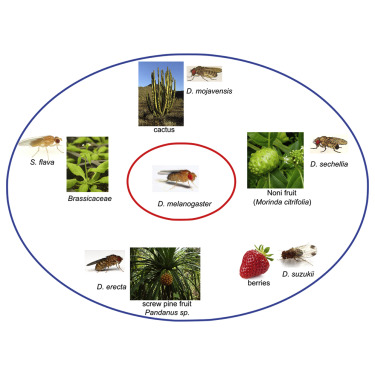iScience ( IF 5.8 ) Pub Date : 2019-12-23 , DOI: 10.1016/j.isci.2019.100799 Robert R H Anholt 1

|
The ability to respond to chemosensory cues is critical for survival of most organisms. Among insects, Drosophila melanogaster has the best characterized olfactory system, and the availability of genome sequences of 30 Drosophila species provides an ideal scenario for studies on evolution of chemosensation. Gene duplications of chemoreceptor genes allow for functional diversification of the rapidly evolving chemoreceptor repertoire. Although some species of the genus Drosophila are generalists for host plant selection, rapid evolution of olfactory receptors, gustatory receptors, odorant-binding proteins, and cytochrome P450s has enabled diverse host specializations of different members of the genus. Here, I review diversification of the chemoreceptor repertoire among members of the genus Drosophila along with co-evolution of detoxification mechanisms that may have enabled occupation of diverse host plant ecological niches.
中文翻译:

果蝇宿主植物选择的化学感受和进化。
对化学感应信号做出反应的能力对于大多数生物体的生存至关重要。在昆虫中,果蝇具有最典型的嗅觉系统,30 个果蝇物种的基因组序列的可用性为化学感觉进化的研究提供了理想的场景。化学感受器基因的基因复制允许快速进化的化学感受器库的功能多样化。尽管果蝇属的一些物种是宿主植物选择的多面手,但嗅觉受体、味觉受体、气味结合蛋白和细胞色素 P450 的快速进化使得该属不同成员的宿主具有多样化的特化。在这里,我回顾了果蝇属成员化学感受器库的多样化,以及解毒机制的共同进化,这些机制可能使得占据不同的宿主植物生态位成为可能。



























 京公网安备 11010802027423号
京公网安备 11010802027423号